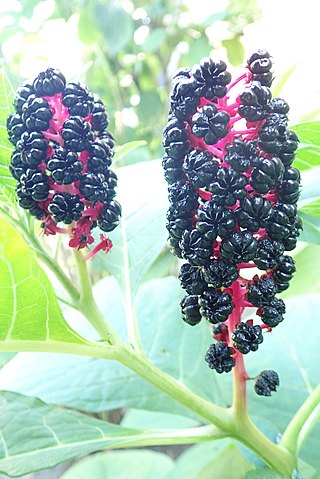Top Qs
Timeline
Chat
Perspective
Phytolacca acinosa
Species of plant From Wikipedia, the free encyclopedia
Remove ads
Phytolacca acinosa, the Indian pokeweed, is a species of flowering plant in the family Phytolaccaceae.[2] It is native to temperate eastern Asia; the Himalayas, most of China, Vietnam to Japan, and has been widely introduced to Europe.[1] The species was originally described by William Roxburgh in 1814.[3][2]
Remove ads
Description
Raphides occur profusely in at least the leaves, young flowers, buds, spikes and bracts of at least P. a. var. venosa.[4]
Range
When the species was originally described it was considered a plant located to Nepal.[3] Currently, the plant is considered native to countries surrounding the Himalayas and introduced to large parts of Europe and parts of the United States (Wisconsin).[1]
Ecology
Indian pokeweed is a hyperaccumulator for manganese.[5][6]
Uses
As a wild food
The young shoots of Indian pokeweed are cooked and eaten by the Gurung people of western Nepal.[7] They are harvested in June and July.
Similar species (look-a-likes)
Due to overlap in diagnostic feature Phytolacca acinosa can be confused with Phytolacca americana, Phytolacca latbenia or Phytolacca polyandra.[8]
- Phytolacca americana
- Phytolacca polyandra
Natural products
Phytolacca acinosa is the source of four flavones,[9] four oleanane derivatives,[10] and six triterpenoid saponins.[11]
Flavones
- Cochliophilin A
- Cochliophilin B
- 6-methoxy-7-hydroxy flavone
- 6,7-methylenedioxy-4-hydroxypeltogynan-7′-one
Triterpenoid saponins
- esculentoside A
- esculentoside B
- esculentoside C
- esculentoside D
- esculentoside H
- esculentoside T
References
Bibliography
Wikiwand - on
Seamless Wikipedia browsing. On steroids.
Remove ads



